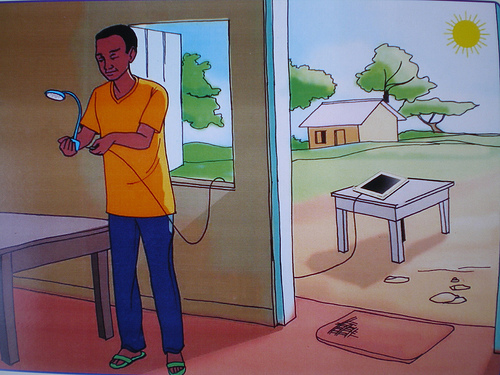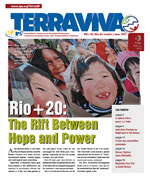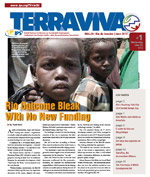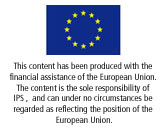By Julio Godoy
RIO DE JANEIRO, Jun 18 (TerraViva) – Mammoth summits such as Rio+20 can easily degenerate into confections of hot air, settings for useless sing-alongs.
But they may also serve as display windows for small projects already improving people’s daily lives somewhere on our blue planet.
This the case for several projects using renewable energy sources in East Africa, which are allowing people in small communities to replace their unhealthy paraffin lamps, avoid accidents, and sparing them inefficient, time-intensive methods to recharge their cellular phones.
In Uganda and Kenya, one person has been deeply involved – a Brazilian systems engineer who migrated to Eastern Africa 15 years ago, only to realise that what he had learnt at home was useless on the other side of the world.
“I realised very soon that I had to adapt my knowledge to local conditions if I wanted to be of any help there, and that what people needed there were not efficient logistics, but renewable energy,” Izael Pereira da Silva, deputy vice-chancellor for academic affairs at the University of Strathmore in Nairobi, Kenya, told TerraViva.
Apart from his academic responsibilities, Pereira da Silva is a creative development agent, who has made the introduction and expansion of renewable energy sources in East Africa his life’s work.
These days, he has returned to his native country to participate in the U.N. conference on sustainable development, and show that Africa needn’t be the “dark” continent.
“When you fly over Africa overnight, you don’t see light,” he said. “There are some bright spots, in South Africa. But otherwise, the continent is dark. This can be changed very easily, generate enormous amounts of electricity using only renewable energy sources, with zero or very low carbon emissions,” he added.
Pereira da Silva said that the Congo River alone has the capacity to generate some 150,000 gigawatts, using several, small hydroelectric plants, thus avoiding the highly inefficient, giant dams of the dreadful Mobutu-Sese-Seko era. Such capacity would be enough to provide electricity for the whole continent.
“But the African countries must interconnect and upgrade their national grids, to diversify their energy sources, using hydroelectric power, sun, wind, and bio-energy,” he said. “That way, the continent would not be dependent on one source, to eliminate the risk of large-scale failures.”
The Brazilian engineer said that, “In 15 years in Africa, I had almost never seen a whole day without sun. The continent must use this source – the solar energy technology, both photovoltaic and solar thermic, is ripe.”
Pereira da Silva mentioned the Desertec project, which aims at installing large solar-thermic plants in the Maghreb and North African countries, to meet all the regional electricity demands, and still export a substantial share to Europe.
“Such plants can also be installed all over Africa,” he said. “Wind turbine parks too.”
But before dreaming of a bright future for the whole of Africa, Pereira da Silva started small-scale. “People in Uganda and Kenya use small paraffin and kerosene lanterns to light their homes, when they could be using sun-driven lamps,” he said.
These lamps are indeed unhealthy, inefficient, and extremely expensive.
According to the World Health Organization, there are over 300,000 deaths every year from burns caused by such lanterns. Millions die of cancer and other diseases caused by the fumes the lanterns emit.
Furthermore, poor people burn some 17 billion dollars in kerosene and paraffin each year in lanterns to light their homes.
“To replace such lanterns, we distributed to some communities in Uganda small solar panels, of two watts capacity,” Pereira da Silva said. “They are enough to light a home for five hours, and still have enough capacity to charge a cellular phone.”
Without such solar panels, the users would have to walk to the next town, connect there their cellular phones to the grid, and wait hours until the devices were recharged.
Pereira da Silva also helped to conceive sun-driven ovens, for cooking. “We also distributed 500,000 energy-saving bulbs, to save electricity and reduce the failures of the grid. The bulbs cost 1.6 million U.S. dollars,” Pereira da Silva said.
“The bulbs served to save 30 gigawatts – in 28 hours, the investment had been paid by the savings.”
Pereira said that for such projects to be successful, it is necessary to involve government authorities, the private sector, research entities such as engineering faculties, and local communities. “The tripod made up of state, enterprises and academia help to light ordinary people’s lives,” he said.








 Add to Google
Add to Google







